Continuing last month’s column on attracting songbirds to the garden, the focus this month is on the special characteristics and needs of the enthralling Ruby-throated Hummingbird.
There is not much that can compare to the joy of sighting the iridescence of a Hummingbird close at hand. Compared to songbirds, they are remarkable for their unique flying ability that enables them to hover over flowers and thrust their needle-sharp bills deep inside blossoms to gather nectar and tiny insects. Their bodies seem almost motionless at times because of the rapid motion of their wings, which produces a low humming sound, giving them their common name. They can even fly backwards!
Capable of Incredible Feats!
The Ruby-throated Hummingbird (Archilochus colubris), the only breeding hummer in eastern North America, is common to our area. (A half-dozen species are found in the West and Southwest.) It has an iridescent red throat and a green crown and back. The iridescent parts of the feathers are flat and reflect light in just one direction and therefore, the sun must strike the feathers in just the right way or they will look almost black.
A male’s wings can beat 78 times per second during regular flight and up to 200 times per second during a dive. Their wings are fixed and rigid except at the shoulder joint, allowing them to move freely in all directions. Its heart beats 1,260 times per minute. At rest, it takes 250 breaths per minute. The movement of hummers is limited to flight, as their small feet prevent them from walking or hopping. However, they can shuffle along a perch.
An adult measures 3.75 inches in length and weighs only 3.5 grams on average. Despite their size, many fly nonstop every year to and from Mexico, their wintering grounds. Their usual lifespan is 3 to 5 years.
Hummers feed from dawn to dusk. They locate their food by sight, as they do not have a sense of smell.
Nesting
Hummingbirds nest in sheltered trees or shrubs, often favoring pines, spruces, maples and birches. The nest is constructed by the female over the course of six to 10 days. Wanting her nest to be soft and flexible, she starts with leaves as a base and then adds twigs and bits of plants. It’s finished off with moss and lichen to camouflage the nest and make it soft. Catkin-bearing trees and shrubs – like willows, witch hazels and birches – provide soft plant fibers for nesting materials. The entire nest is held together by spider silk, which she incorporates. (Fostering spiders will encourage Hummingbirds to nest nearby and control many insect pests.)
The nests are only an inch in diameter; you will seldom find them because of the camouflage. It will look like a small knot of wood. The flexible materials allow the nest to expand as the chicks grow. Since they lose their shape, nests are used only once.
Hummingbird eggs are about the size of jellybeans. There are usually two eggs and they are incubated for two to three weeks. The juveniles leave the nest 18 to 28 days after hatching. The female provides all direct parental care of the young, receiving no help from the male.
Feeders
It is not difficult to attract this enchanting bird to your garden. One way is with a feeder. Most are made of plastic, some of glass, but any will work well. Most of the feeders will have flower patterns or red sections that are attractive to Hummingbirds. It is important to keep them filled with a sugar-water solution and cleaned regularly.
It’s a good idea to place your feeders where they will not be jostled by wind. Also, don’t position them in full sun, which causes the sugar solution to spoil. Feeders can be suspended from a tree limb or metal support. There are also feeders that can be mounted on a window.
Early on you will notice how territorial the Hummingbird is around a food source, especially during the breeding season. Aggressive toward other hummers is more descriptive, which is a good reason to put up additional feeders in other areas out of view!
Hummingbirds get quick energy from sugar-water feeders, which fuels their search for the small insects and spiders that they find inside the flowers and provide most of their nourishment. Hummingbirds will also feed on tree sap when nectar is scarce or unavailable.
Planting for Hummingbirds
Your Hummingbird garden can be as simple as a flower box or a collection of pots on a patio, or as expansive as an herbaceous border or wildflower meadow. If space permits, provide plants varying in height, as this allows access to all the flowers; hummers need space around the blooms to hover and feed comfortably. Obviously make flowers and flowering shrubs available for nectar, as well as trees of different heights for them to perch.
Tubular flowers seem especially adapted to accommodate the long bills and long tongues of hummers. Red flowers are especially attractive since they are most easily distinguished from other colors (bees, interestingly, are not drawn to red). However, the main factor in flower choice is reward. Hummingbirds have no difficulty hovering below a flower or gathering nectar from a narrow, tubular flower. Also, hummers care nothing about scent, which is an attractant for pollinating insects.
Interestingly, pollen from differently shaped flowers is picked up on different parts of the hummer including the forehead, chin and all around the bill. One study found that Ruby-throated hummers deposited 10 times as much pollen per visit as did bumble bees and honeybees.
Favorite Plants for Hummers
Set a goal of having some “Hummingbird flowers” in bloom at all times during their annual visit. Remember that they like many types of flowers, not just red tubular ones, and that any flower that attracts insects is beneficial, as it provides that other essential part of a Hummingbird’s diet.
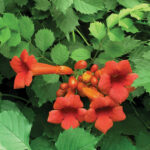 Trumpet Vine (Campsis, Bignonia): Vines can grow up sturdy trellises or along fences, making feeding easy for the birds. Blooms mid-summer. Can be very aggressive.
Trumpet Vine (Campsis, Bignonia): Vines can grow up sturdy trellises or along fences, making feeding easy for the birds. Blooms mid-summer. Can be very aggressive.
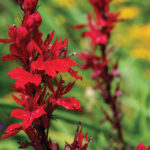 Cardinal Flower (Lobelia): Very showy red flowers bloom June to September. Sun or shade. Prefers constant moisture. Will reseed.
Cardinal Flower (Lobelia): Very showy red flowers bloom June to September. Sun or shade. Prefers constant moisture. Will reseed.
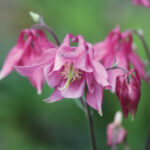 Columbine (Aquilegia canadensis): Blooms April/May, just when the hummers are arriving. Sun or shade. Will self-seed.
Columbine (Aquilegia canadensis): Blooms April/May, just when the hummers are arriving. Sun or shade. Will self-seed.
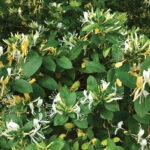 Honeysuckle (Lonicera): Blooms May to June. Full sun. Fall berries are attractive to birds. Can be invasive.
Honeysuckle (Lonicera): Blooms May to June. Full sun. Fall berries are attractive to birds. Can be invasive.
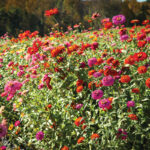 Zinnia (Z. elegans): Annual with countless cultivars. Easy to grow from seed.
Zinnia (Z. elegans): Annual with countless cultivars. Easy to grow from seed.
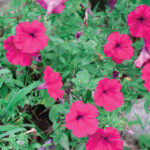 Petunias (Petunia): Annual with lots of color choices.
Petunias (Petunia): Annual with lots of color choices.
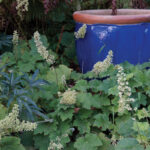 Coral Bells (Heuchera): Available in a wide range of (foliage) colors. Spring to late-summer bloom times. ‘Autumn Bride’ is a favorite, late-summer bloom. Part sun/shade.
Coral Bells (Heuchera): Available in a wide range of (foliage) colors. Spring to late-summer bloom times. ‘Autumn Bride’ is a favorite, late-summer bloom. Part sun/shade.
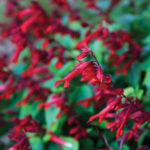 Salvia (Salvia): Many choices, both annuals and perennials. Blooms mid-to-late summer. Salvia greggii is my favorite. Deadhead for repeat blooms.
Salvia (Salvia): Many choices, both annuals and perennials. Blooms mid-to-late summer. Salvia greggii is my favorite. Deadhead for repeat blooms.
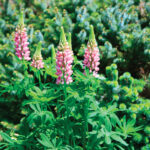 Lupines (Lupinus Russell Hybrids): This tall plant offers many colors. Blooms May into July. Full sun.
Lupines (Lupinus Russell Hybrids): This tall plant offers many colors. Blooms May into July. Full sun.
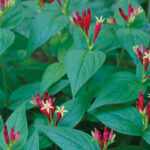 Indian Pink (Spigelia): Underused native with interesting red and yellow flowers. June bloom time. Part shade, moist soil. Nice in a container.
Indian Pink (Spigelia): Underused native with interesting red and yellow flowers. June bloom time. Part shade, moist soil. Nice in a container.
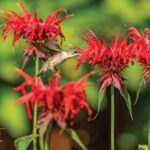 Bee Balm (Monarda didyma): A hummer magnet! Blooms May to July. Do not let dry out. Deadhead to prolong bloom. Needs good air circulation to avoid mildew.
Bee Balm (Monarda didyma): A hummer magnet! Blooms May to July. Do not let dry out. Deadhead to prolong bloom. Needs good air circulation to avoid mildew.
 Morning Glory (Ipomoea): Annual. Flowers until fall. Easy to grow from seed. Needs support.
Morning Glory (Ipomoea): Annual. Flowers until fall. Easy to grow from seed. Needs support.
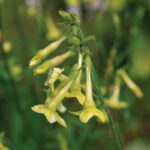 Flowering Tobacco (Nicotiana spp.): Annual. Fragrance is a bonus.
Flowering Tobacco (Nicotiana spp.): Annual. Fragrance is a bonus.
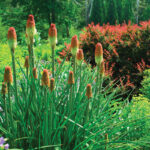 Red Hot Poker (Kniphofia): Tall plant with dramatic/bold flowers. Early summer bloomer. No boggy soil.
Red Hot Poker (Kniphofia): Tall plant with dramatic/bold flowers. Early summer bloomer. No boggy soil.
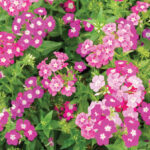 Phlox (Phlox drummondii): Annual. Blooms May to July (declines in heat). Great ground cover and for use in containers and rock gardens. Will reseed.
Phlox (Phlox drummondii): Annual. Blooms May to July (declines in heat). Great ground cover and for use in containers and rock gardens. Will reseed.
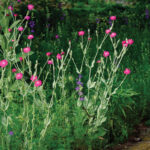 Rose Campion (Lychnis): Vivid magenta flowers with wooly silver foliage. Blooms May into July in full sun. Easy to grow and will freely self-seed.
Rose Campion (Lychnis): Vivid magenta flowers with wooly silver foliage. Blooms May into July in full sun. Easy to grow and will freely self-seed.
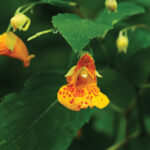 Jewelweed (Impatiens): Tall annual that self-seeds. Requires shade and wet soil.
Jewelweed (Impatiens): Tall annual that self-seeds. Requires shade and wet soil.
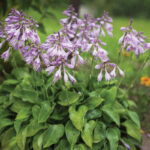 Hosta (Hosta spp.): Grown for the foliage, but their flowers are an excellent nectar source.
Hosta (Hosta spp.): Grown for the foliage, but their flowers are an excellent nectar source.
Agastache (Agastache foeniculum): Mint-like foliage with tubular flowers that hummers love. Full sun, good drainage.
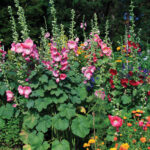 Hollyhock (Alcea): Biennial. Because of their height, they’re great for the back row of your border. Self-seeds.
Hollyhock (Alcea): Biennial. Because of their height, they’re great for the back row of your border. Self-seeds.
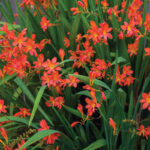 Crocosmia (C. ‘Lucifer’): Tall plant that produces exotic-looking orange-to-red blooms.
Crocosmia (C. ‘Lucifer’): Tall plant that produces exotic-looking orange-to-red blooms.
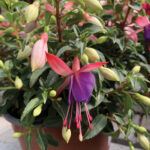 Fuchsia (Fuchsia): This hummer magnet is not hardy but is a favorite in hanging baskets.
Fuchsia (Fuchsia): This hummer magnet is not hardy but is a favorite in hanging baskets.


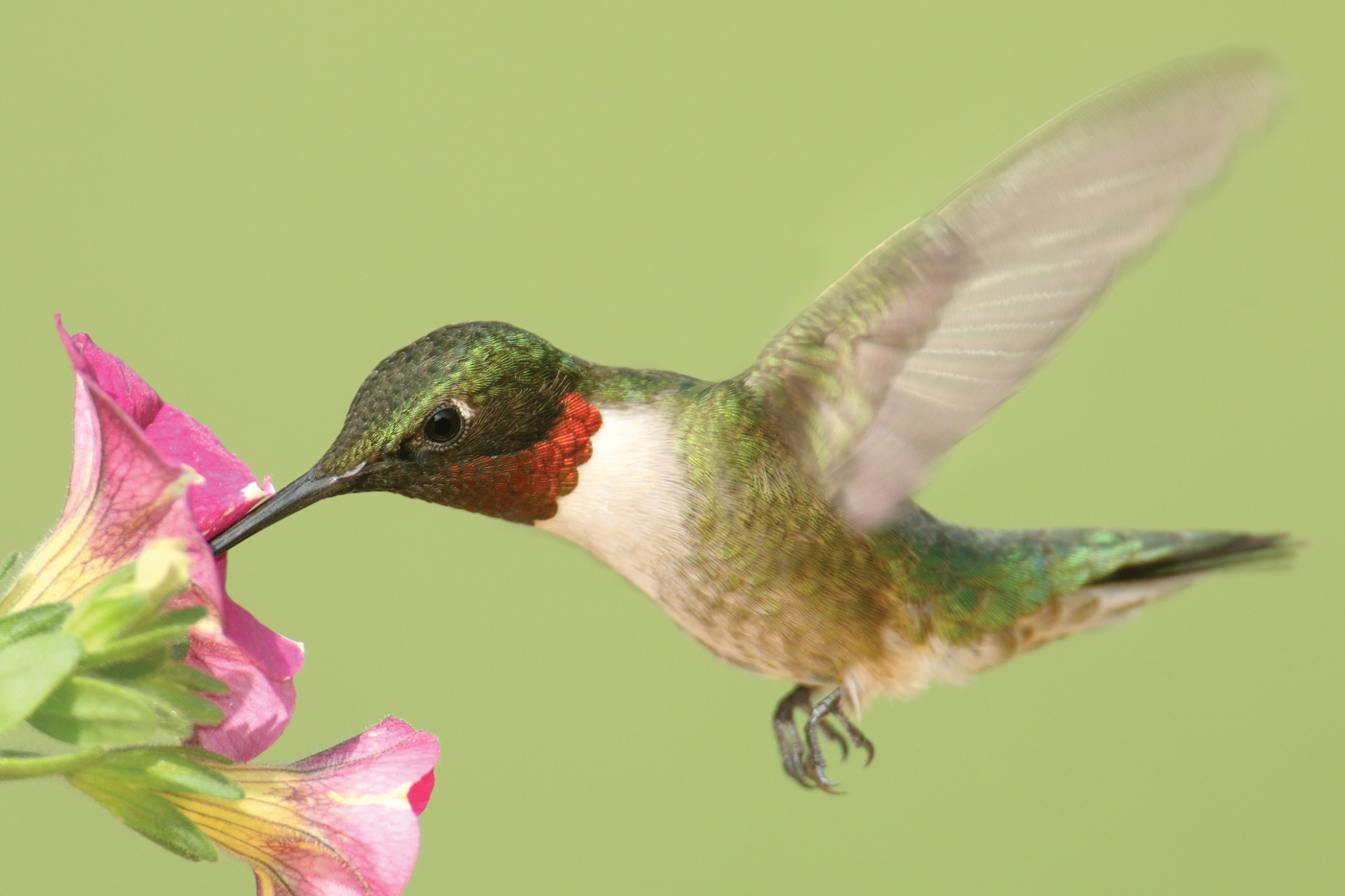
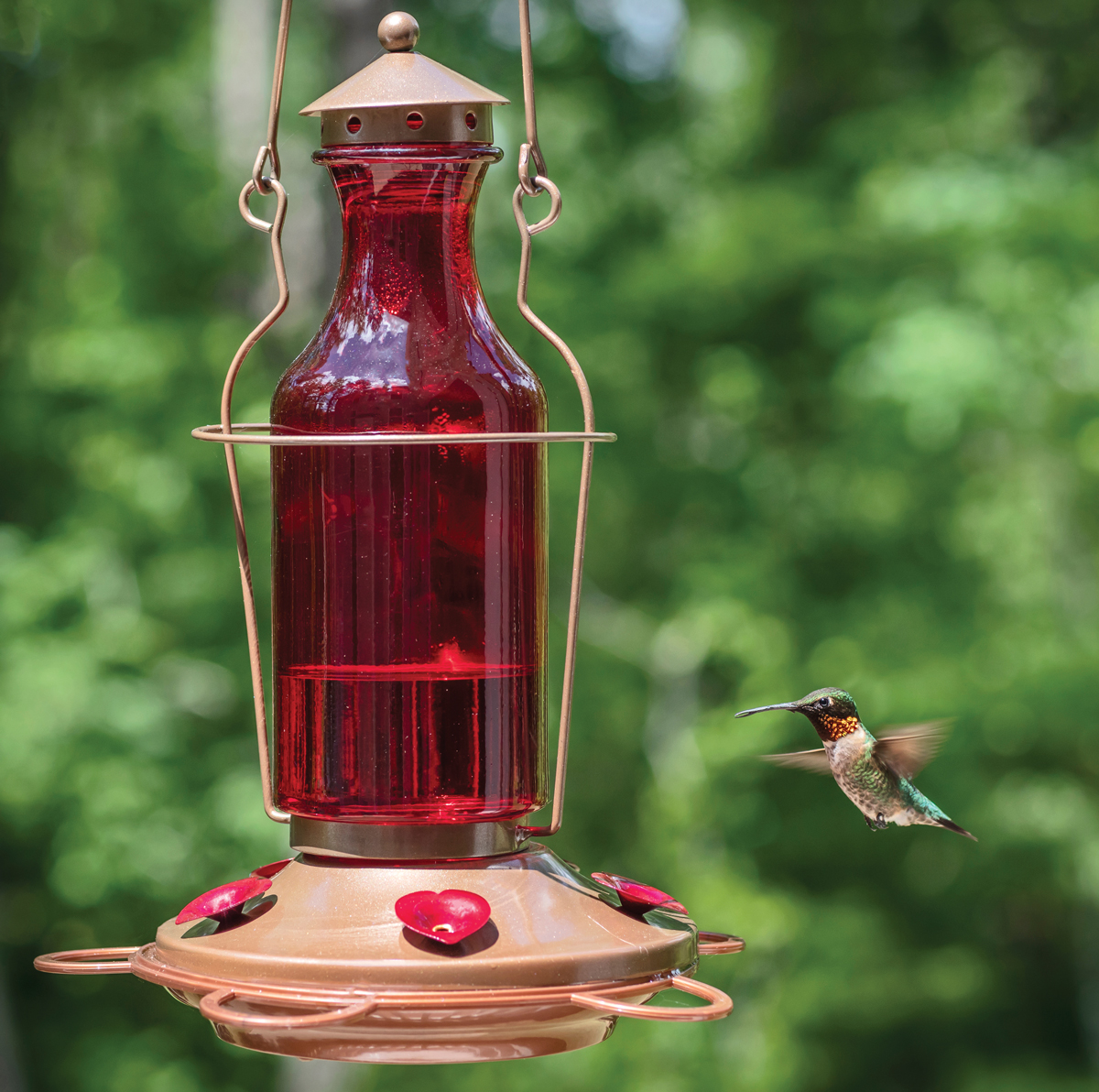
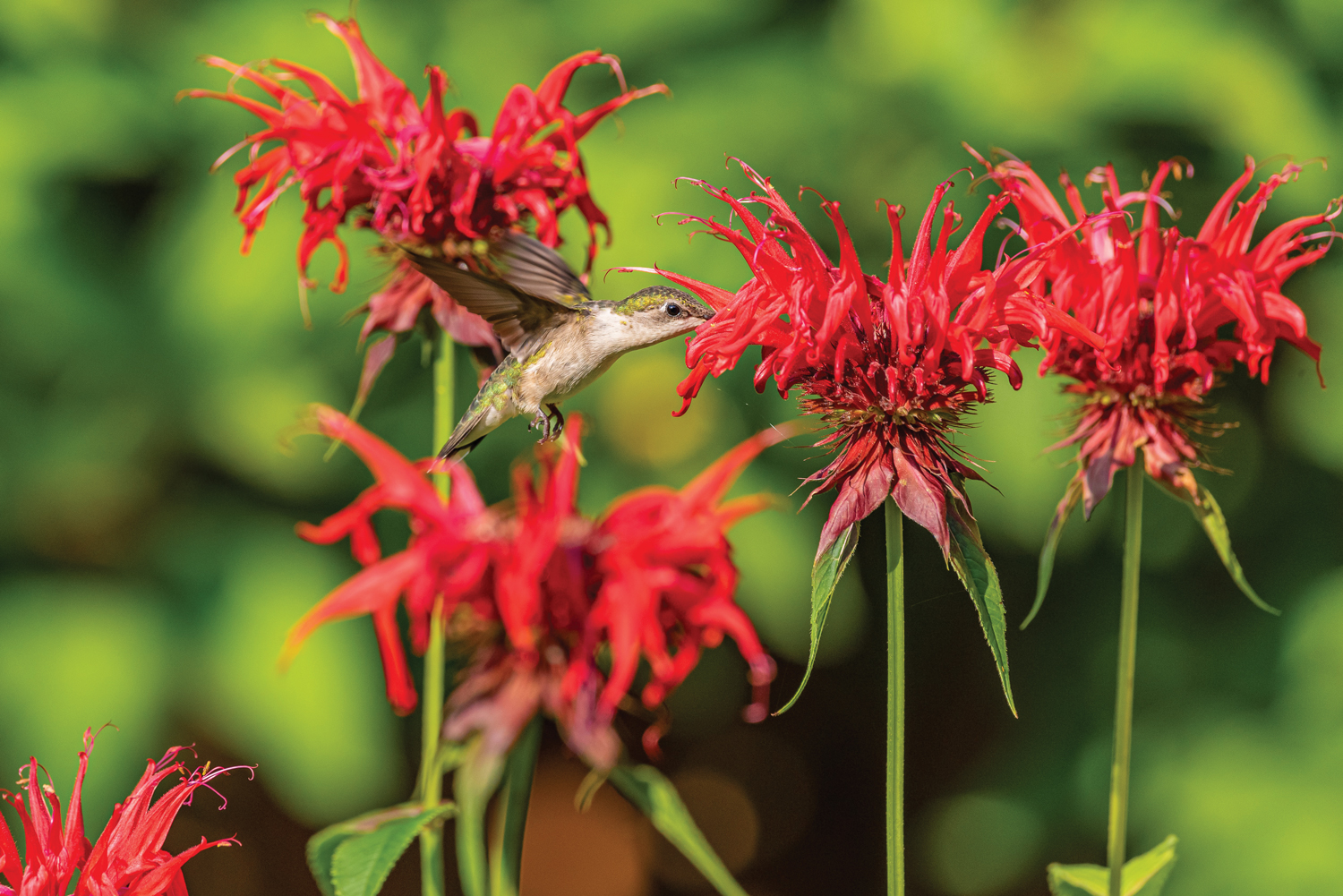
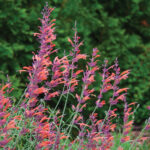
What about Lantana?